Abstract
A total of 141 cases of traumatic tetraplegia were admitted to the Liverpool Paraplegic Centre between 1947 and 1967. Most of the deaths occurred within three months of injury, and comparison with other centres suggests that the early mortality could be reduced by more use of mechanical respirators.
Urological complaints and pressure sores are hazards that can be overcome by careful attention to nursing procedures. Later deaths are more common among patients transferred from the unit to hostels or hospitals than among patients transferred home. Specialist units for these patients improve the quality of their lives as well as their expectation of life. Electronic equipment can also play a large part in helping tetraplegics to play a part in community life.
Full text
PDF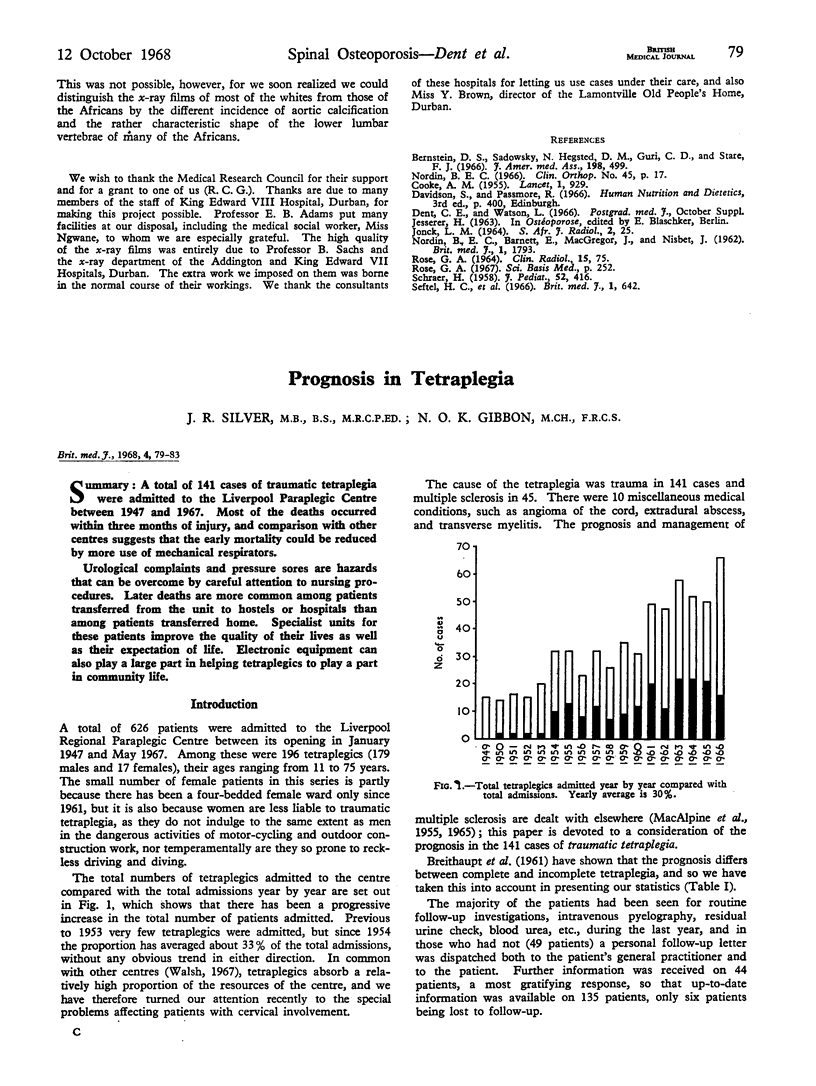
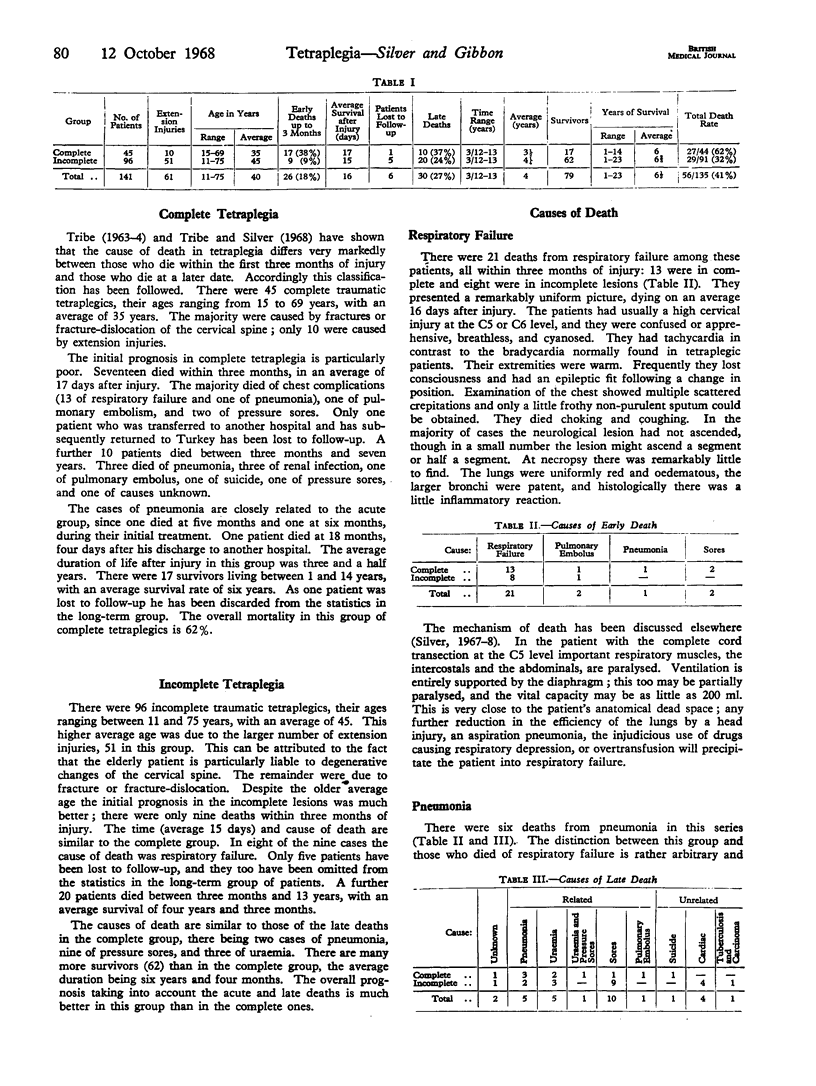
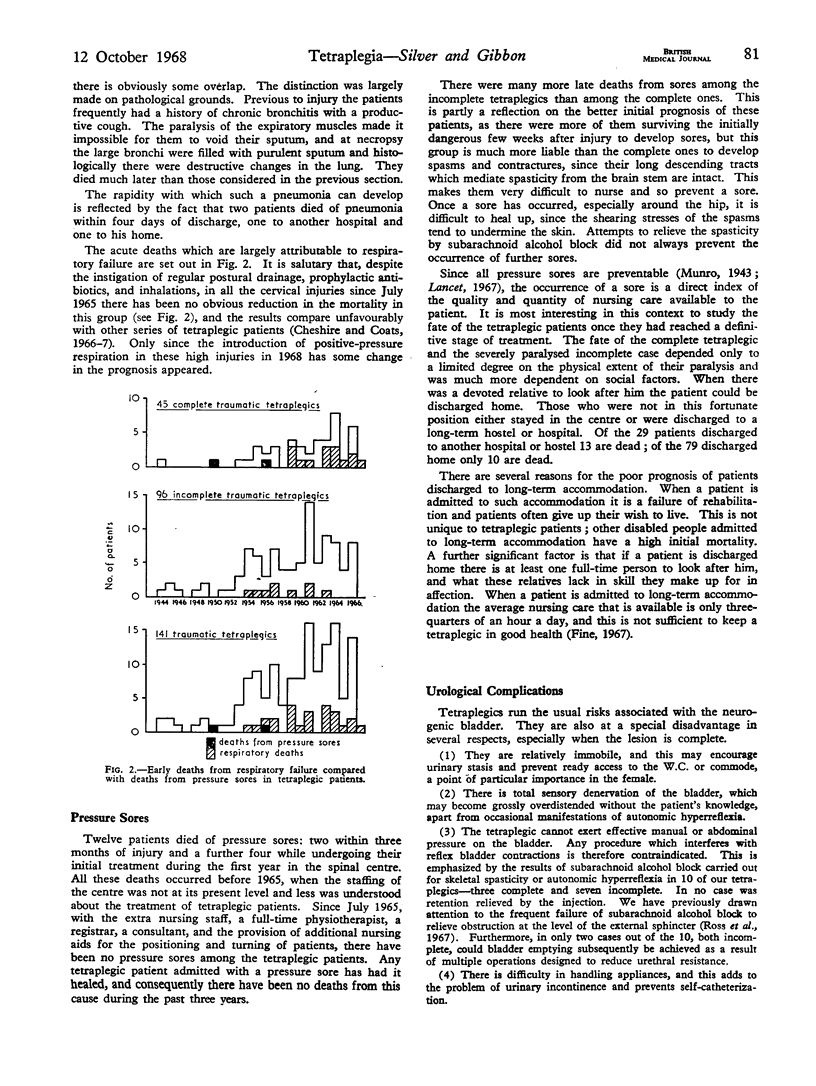
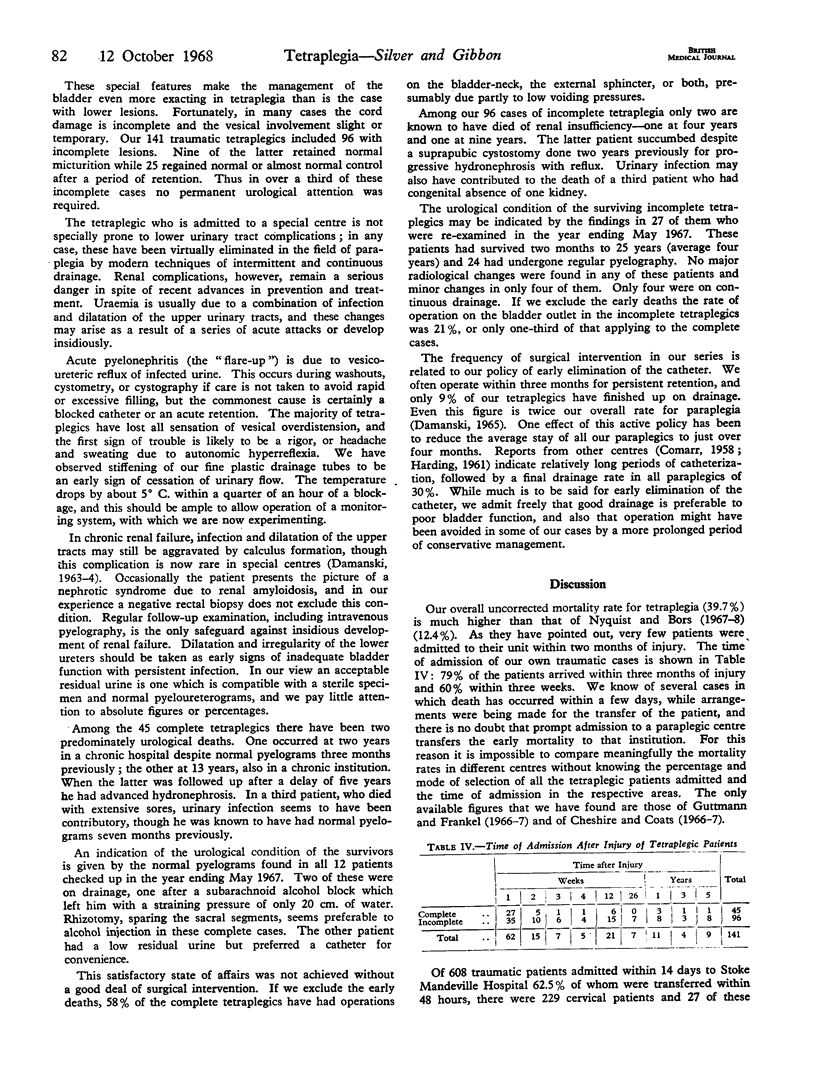
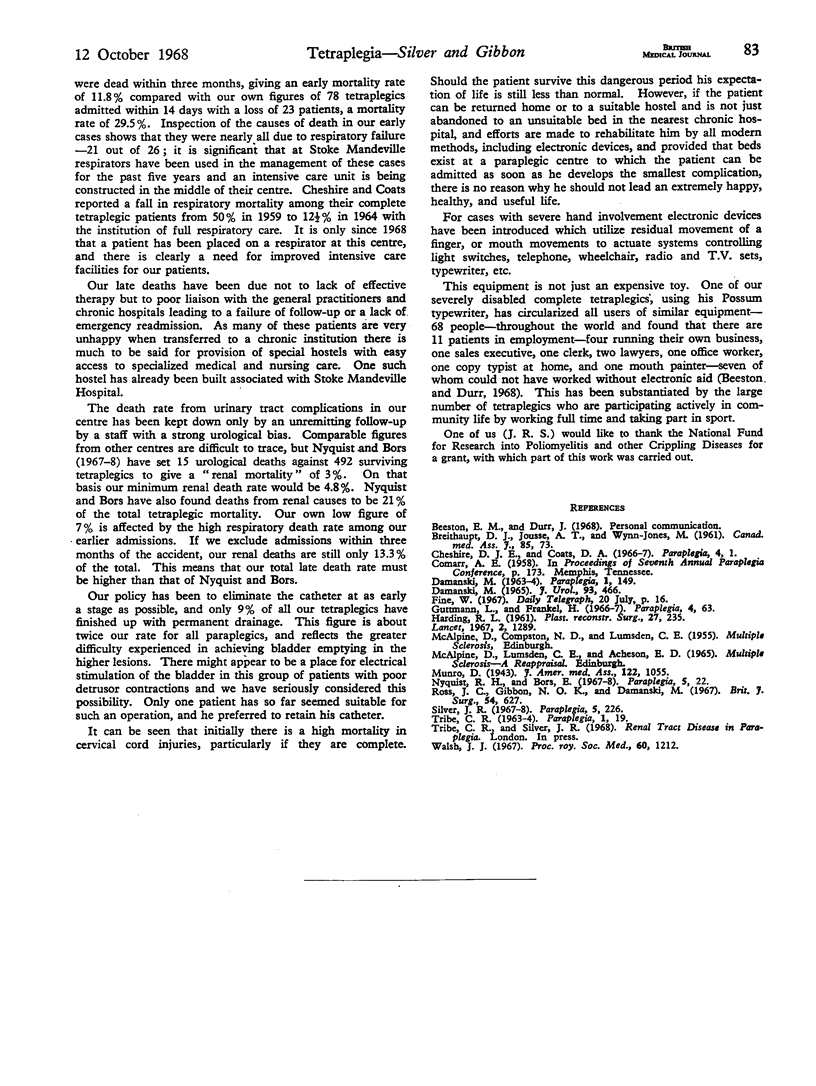
Selected References
These references are in PubMed. This may not be the complete list of references from this article.
- DAMANSKI M. CYSTOURETHROGRAPHY IN PARAPLEGIA AS A GUIDE TO CATHETER-FREE LIFE: 17 YEARS' EXPERIENCE OF A PARAPLEGIC CENTER. J Urol. 1965 Apr;93:466–471. doi: 10.1016/S0022-5347(17)63806-0. [DOI] [PubMed] [Google Scholar]
- DAMANSKI M. STONE DISEASE IN PARAPLEGIA. Paraplegia. 1963 Sep;1:149–156. doi: 10.1038/sc.1963.13. [DOI] [PubMed] [Google Scholar]
- HARDING R. L. An analysis of one hundred rehabilitated paraplegics. Plast Reconstr Surg Transplant Bull. 1961 Mar;27:235–247. doi: 10.1097/00006534-196103000-00001. [DOI] [PubMed] [Google Scholar]
- Ross J. C., Gibbon N. O., Damanski M. Division of the external sphincter in the treatment of the neurogenic bladder. Br J Surg. 1967 Jul;54(7):627–628. doi: 10.1002/bjs.1800540713. [DOI] [PubMed] [Google Scholar]
- Walsh J. J. High tetraplegics in modern society. Proc R Soc Med. 1967 Nov;60(11 Pt 2):1212–1215. [PMC free article] [PubMed] [Google Scholar]


